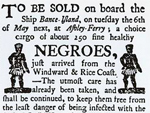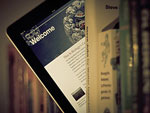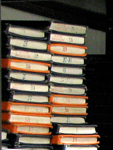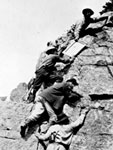APPARTS Strategy: Origins and Implementation

I am writing a lit review on Digital History, and want to include some work regarding APPARTS. I've had difficulty finding scholarly work regarding the APPARTS strategy. I am hoping that you know of a couple of scholarly articles that deal with APPARTS.
APPARTS was developed by the Social Studies Vertical Teams Committee of the College Board to promote equity and access to Advanced Placement courses. By the mid-1990s, the College Board committed itself to the elimination of gate-keeping strategies for entry into AP courses, believing that many underserved students could benefit from a more rigorous curriculum. Contingent on the success of those students was earlier exposure to rigorous academic work from middle school on. As a result, the College Board developed a series of pre-AP initiatives designed to foster better preparation for challenging courses. One of those was the Social Studies Vertical Teams Guide.
The original Social Studies Vertical Teams Guide was divided into five sections:
- Improving Student Comprehension: Primary Sources
- Improving Student Comprehension: Secondary Sources
- Synthesizing Information: Categorization, Generalization, and Evaluation
- Preparing Students for Assessment
- Tying It All Together
Several Advanced Placement Social Studies exams require students to analyze primary source documents and write an essay known as the Document-Based Question (DBQ). With that in mind, the Social Studies Vertical Team Committee generated a strategy which would allow students to more closely analyze primary source documents and more effectively use the essence of those documents in their essays. Thus APPARTS was born.
APPARTS is designed to get students to focus on key elements of the document and to evaluate the relative importance of these elements in affecting the reliability of this document. Those elements are:
- Author: Students should look closely at who authored the piece. What do they know about the author that would affect the reliability of the document? Are they aware of any bias the author might possess which would color the account? In AP World and AP European history, point-of-view factors heavily in the grading of the DBQ.
- Place and Time: When and where was the source produced, and how might this affect the meaning of the document? If time and place is not given in the source, are there clues within the document as to the time and place of origin?
- Prior Knowledge: Based on the author and time and place of the source, what additional knowledge can a student trigger from this document? An example might be a document from John C. Calhoun which doesn’t mention nullification. A student might know that John C. Calhoun authored the South Carolina Exposition and Protest which espoused the compact theory of government and the possibility of nullification. A political cartoon might have drawings of an elephant and donkey. Can the student determine what those symbols represent?
- Audience: Who was the source created for, and how might this affect the reliability of the document? Would we anticipate that Richard Nixon would say the same things to his advisors in the Oval Office concerning the Watergate break-in that he would in a radio address to the American people? Why would Franklin Roosevelt say, "Your boys are not going to be sent to any foreign wars?"
- Reason: Why was this document produced at the time and place it was? Prior knowledge, time and place, author, audience all factor in to a student being able to determine reason. Why would Andrew Jackson says, "John Marshall has made his decision, now let him enforce it" in 1832? Why would Joseph Keppler draw the anti-immigration restriction cartoon "Looking Backward" in 1893?
- Main Idea: What is the point the document is trying to make? It is essential that students be able to synthesize the information in the source and express it in a single sentence, rather than simply paraphrasing or directly quoting the document.
- Significance: On the Advanced Placement exam, students are always asked to examine documents relative to a specific question. In the Significance component of APPARTS, students must ask themselves the question, "How and why does this document support my thesis?" The AP Vertical Teams Guide suggests that students ask themselves, "So what?"
The purpose of APPARTS is to develop student skills which will enhance their ability to use primary source documents as evidence in analytical essays. Ideally, APPARTS should be introduced in a pre-AP setting (middle school) well before students encounter their first Advanced Placement class.
APPARTS is not a test-taking strategy. Document-Based Questions on the Advanced Placement exams allow students only 15 minutes to read and analyze somewhere between eight to 12 documents. There is no time to go through the APPARTS process. Therefore, APPARTS must have become, in the words of the AP Social Studies Vertical Teams Guide, "a habit of mind." Student must have had enough practice so that it has become an intuitive part of examining documents.
We are not aware of any research done on the use of the APPARTS strategy, but we hope that this information about its origins is helpful. The literature that addresses historical reading and asking questions of text may be useful—please explore Research Briefs.





